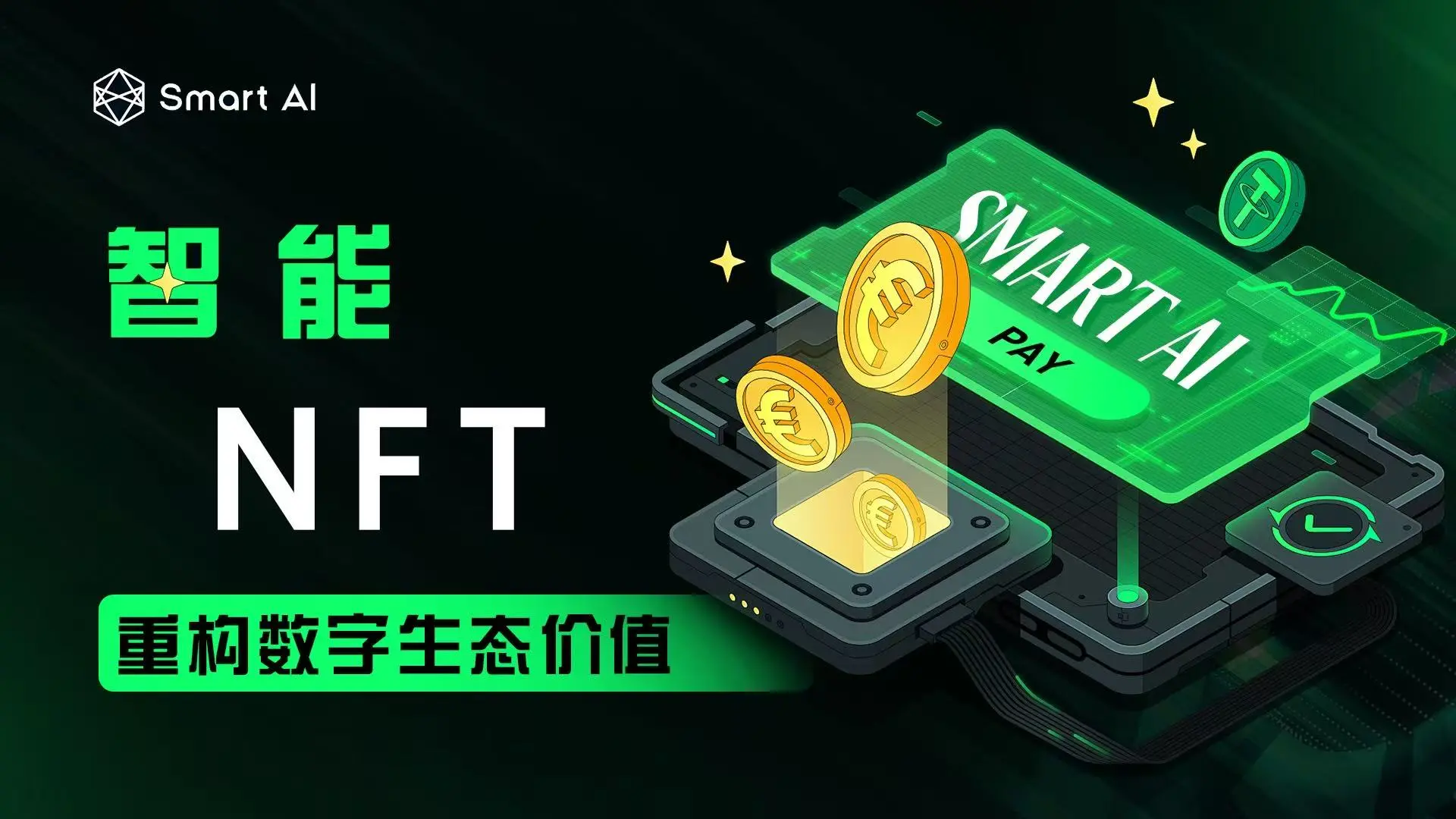Four Ways to Navigate the NFT Economy: Index Funds, Collateralized Lending, and More
This article was published on Babit, authored by Overnight Porridge
Recently, almost everyone in the cryptocurrency community has been talking about NFTs. What’s the reason?
Answer: They represent the future of digital content; they are on-chain programmable, tradable, permissionless, and DIY media Legos built for the digital age.
These digital canvases are game changers for a variety of creators, but talking about them and staring blankly at them is one thing, while actually trying to get direct exposure to NFTs in your portfolio is another. Where should you start?
Well, that’s a straightforward question as always. Looking at how billionaire investors like Mark Cuban and Chamath Palihapitiya are currently at the forefront of the NFT economy, you might wonder how you can participate in this once-in-a-lifetime cultural gathering.
This article will show you how to build an NFT portfolio in various ways, including directly purchasing NFTs, buying NFT platform tokens, or investing in NFT index fund tokens.
Of course, we still need to do our own research; this guide merely provides some ideas on how to get started.
Goal: Gain NFT risk exposure in your crypto portfolio
Skill Level: Basic/Intermediate.
Learning Time: 15-30 minutes.
There are many ways to get exposure to NFTs, and you can choose the method that suits you best to enhance your portfolio.
One simple way is to buy NFT assets from projects and creators that you find appealing within your price range. You can manage these NFT assets by handling ERC-20 tokens, for example, through a hardware wallet or a browser wallet like MetaMask.
But there are also some interesting ways to participate in the NFT ecosystem.
Here, we will break down all the main options so you can start designing your own NFT strategy.
1. Directly Own NFT Assets
Ethereum already has several general NFT marketplaces like OpenSea and Rarible, which aggregate NFTs from across the ecosystem, allowing users to purchase various NFT assets through a single, user-friendly dashboard.

Source: opensea.io
Additionally, there are some specialized NFT marketplaces, such as SuperRare and Nifty Gateway, which focus specifically on crypto art NFTs.
Of course, you can use both types of platforms, but before doing anything, you need to prepare some ETH to buy or bid on NFTs.
Markets like OpenSea allow the buying and selling of many tokens, but ETH is typically the primary currency. You will also need a browser wallet like MetaMask so you can interact directly with the smart contracts of the NFT marketplace.

Source: superare.co/discover
Once you have your cryptocurrency and wallet ready, you can go buy, buy, buy. Head to your chosen marketplace and connect your wallet, and then you can start collecting these NFT assets.
Set a budget and look for NFTs within your price range; some NFT assets that catch your eye may be extremely expensive, and it can be hard to judge whether acquiring these NFT assets is right or wrong. Keep in mind that NFTs are assets with very low liquidity, so investing in them does not guarantee you will make a profit.
The safest approach is to only buy NFTs that you personally find very cool or unique and that you wouldn’t mind holding for years. The potential benefit of this approach is that others may eventually find your NFTs really cool and offer a profitable bid at some point in the future.
Pro Tip: You can use NFT market data websites like NonFungible to analyze prices and recent market activity.
2. NFT ERC20 Tokens
Ethereum ERC20 tokens can be used to tokenize or represent anything, so it’s natural to see ERC20 tokens surrounding the NFT ecosystem.
For example, governance tokens like Rarible’s RARI or Axie Infinity’s AXS. These are projects focused on NFTs, so they are likely to benefit from the NFT boom.
These tokens allow holders to govern these projects from the ground up and collectively own them as a community rather than being owned by a company.
If these NFT projects can grow significantly, the demand for their governance tokens will also likely increase. Purchasing these tokens on DEXs like Uniswap is one way to gain exposure to the NFT ecosystem, although these specific assets can also be obtained through participation in the ecosystem (for example, buying and selling on Rarible or regularly playing Axie Infinity).

Source: axie.substack.com
Next are some utility tokens, such as MEME from the Meme Protocol and the SAND token from the Sandbox gaming platform. When I say utility tokens, I mean these assets provide holders with certain advantages or uses, and some features cannot be accessed without holding them.
For example, the Meme Protocol is an NFT farming project that requires users to stake MEME tokens to receive NFT airdrops, while the SAND token is the native currency used to pay for Sandbox games.
These assets can capture the growing demand for these NFT projects, making them another investment avenue.
The final category of NFT-centric ERC-20 tokens is fractional ownership tokens, such as NIFTEX’s sharded NFTs or Metapurse’s B20 token.
NIFTEX is a platform that allows users to convert their NFTs into easily tradable and liquid ERC-20 tokens, making it a promising avenue for collective ownership of NFTs, with about 20 NFT shard markets available.
Metapurse’s B20 token employs a similar idea, having fractionalized ownership of The Beeple 20 series artworks. With Beeple’s upcoming Christie auction, this could be a unique way to gain access to his artwork.
If you believe the underlying NFTs will increase in value, then fractional ownership tokens are a simple way to gain relevant risk exposure.
3. Lending to NFT Users
An increasing number of NFT holders are interested in using platforms like NFTfi to collateralize their NFTs to borrow cryptocurrency.
What does this mean? You can lend cryptocurrency in a P2P manner to users who collateralize NFT assets and earn interest from it. If the borrower defaults, you can claim their collateralized NFT assets.

Source: nftfi.com/app/lend/assets
If this sounds like an NFT x DeFi hybrid model that interests you, you can navigate to NFTfi’s lending dashboard, connect your browser wallet, and request loans against any listed NFT collateral according to your preferences.
4. Purchase NFT Index Funds
Finally, we are starting to see the rise of NFT index funds that track baskets of NFTs.
One of the pioneers here is NFTX, which focuses on building index funds to track the floor prices of specific NFT categories (e.g., Zombie CryptoPunks or Origin Axies).
In other words, if you want easy and smooth exposure to Zombie CryptoPunks in your portfolio, you can purchase a small portion of the PUNK-ZOMBIE token, and the same goes for the ORIGIN-AXIE token when it comes to Origin Axies.
These NFTX index funds currently have the highest liquidity on Sushiswap, and the initial funds available for trading include:
- PUNK-BASIC (tracks the floor price of CryptoPunks);
- PUNK-FEMALE (tracks the floor price of Female CryptoPunks);
- PUNK-ZOMBIE (tracks the floor price of Zombie CryptoPunks);
- PUNK-ATTR-4 (tracks the floor price of CryptoPunks with 4 attributes);
- PUNK-ATTR-5 (tracks the floor price of CryptoPunks with 5 attributes);
- PUNK (an index fund composed of various CryptoPunks indices from NFTX);
Conclusion
The NFT economy is heating up at an unprecedented pace, and people are becoming aware of the potential of these assets. Therefore, any savvy crypto investor should consider how to capitalize on the current boom.
There are many ways to participate in the NFT economy; you can directly invest in NFTs, purchase NFT-centric ERC-20 tokens or NFT index funds, or even lend cryptocurrency to borrowers who wish to use NFTs as collateral. Of course, all methods come with risks!
Be cautious when investing in new assets, and handle your NFT strategy with thorough due diligence and consideration of risks.
The more thought you put into your collection efforts, the greater your chances of building a strong NFT portfolio.










